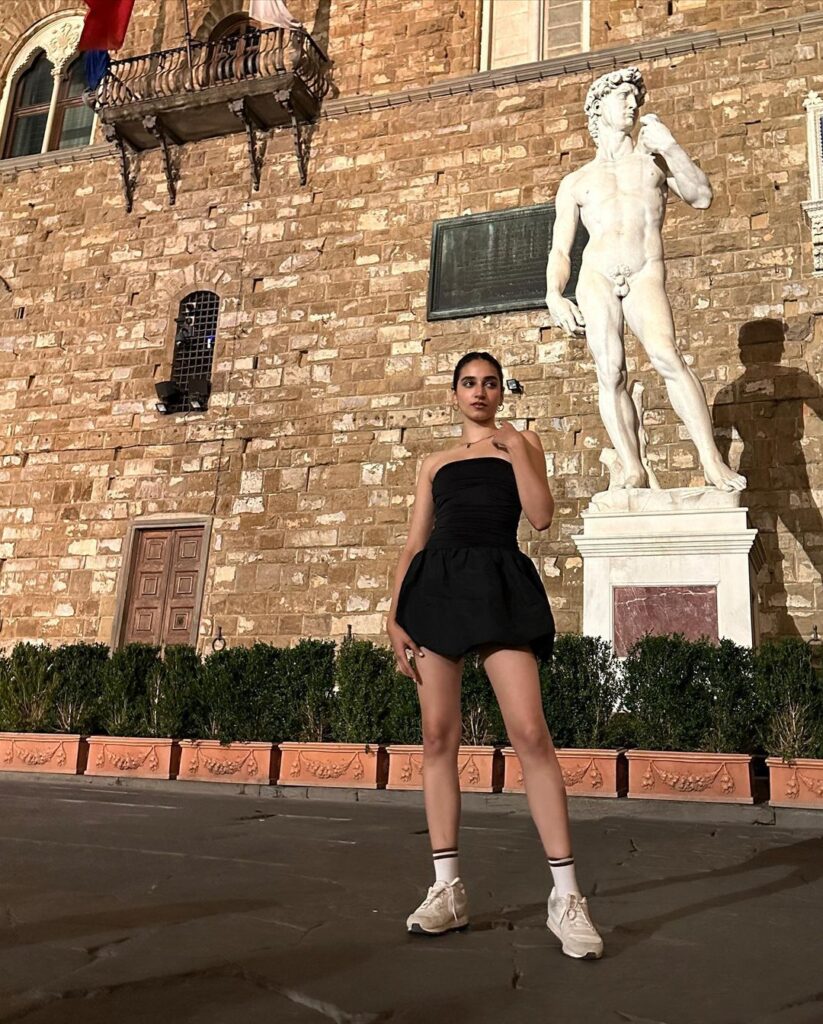Table of Contents
ToggleMamya Shajaffar Faces Public Ire for Audacious Fashion During Trip to Thailand

In recent days, Mamya Shajaffar has become the subject of widespread commentary and criticism following her bold fashion choices during a high-profile trip to Thailand. Her daring ensembles—ranging from sheer gowns to avant-garde accessories—have sparked debate on cultural sensitivity, personal branding, and the boundaries of acceptable international style. This article explores various dimensions of the controversy, analyzing why Mamya Shajaffar has captured global attention, how her fashion choices resonate with diverse audiences, and what this episode reveals about modern celebrity culture.
The Rise of Mamya Shajaffar as a Fashion Icon
Mamya Shajaffar first emerged in the public eye as an influencer deeply rooted in South Asian fashion traditions. Over time, she transitioned toward a more global, experimental aesthetic. Her unique blending of traditional embroidery with futuristic silhouettes established her as a trendsetter. At her previous events, she garnered praise for bridging cultural divides through fashion.
However, during her Thailand trip, Mamya Shajaffar took her experimentation to another level. Donning revealing bodysuits, dramatic capes, and translucent fabrics, she challenged conventional taste—and ignited intense reactions. Critics argue that her boldness embraced empowerment; opponents view it as provocative and culturally insensitive.
In essence, Mamya Shajaffar represents today’s boundary-pushing influencer: confident, memorable, and unafraid to court attention. But when global audiences, local norms, and cultural expectations collide, controversy follows.
Audacious Looks in Bangkok: Style Meets Shock
During her Thailand itinerary—spanning Bangkok temples, Phuket beaches, and private yacht excursions—Mamya Shajaffar debuted looks that left few indifferent:
- At the Grand Palace, she wore a sheer floor-length gown layered over metallic lingerie. The palace, a sanctified landmark, triggered criticism.
- On a Patong Beach photoshoot, she posed in a neon structured bodysuit with cut-outs, drawing both fandom and backlash.
- A luxury yacht outing featured her in a glittering mesh jumpsuit paired with high-waist shorts— deemed excessive by conservative observers.
Throughout these appearances, Mamya Shajaffar maintained a bold posture: “Fashion has no borders,” she announced on social media, attracting both applause and scorn.
Cultural Sensitivity and Cross-Cultural Expression
At the center of criticism is the tension between Mamya Shajaffar’s individual expression and Thailand’s cultural norms. Thailand, while vibrant and tourist-friendly, retains deep Buddhist traditions and established dress codes—especially at sacred sites and royal grounds.
Some visitors defended her: “Why shouldn’t an international figure dress boldly in modern times?” Conversely, others argued that in culturally revered spaces, modesty isn’t just etiquette—it’s respect. Critics insist that her sheer gown at a temple complex appeared disrespectful to Thai customs.
This raises broader questions: When global fashion meets cultural heritage, who decides the boundaries? Is there space for audacious personal style within reverent contexts? The debate, fueled largely by Mamya Shajaffar’s provocative wardrobe, resonates far beyond Thailand.
The Digital Aftershock: Virality & Public Backlash
The moment images of Mamya Shajaffar in provocative ensembles surfaced online, they exploded across Instagram, Twitter, and TikTok. Online opinion split sharply:
- Supporters praised her bravery and unapologetic stance.
- Detractors criticized a perceived lack of respect for heritage and religious spaces.
Social media influencers weighed in. Notably, fashion commentator Amina Lee wrote: “Boldness has its place—but context matters. Mamya Shajaffar crossed a line.” Meanwhile, another influencer, Raj Patel, responded: “A woman owns her body—if that shakes norms, good!”

National media in Thailand also responded. One Thai publication headlined: “Celebrity Visits Temple in See-through Dress”, describing the outfit as “tone-deaf.” Meanwhile, international entertainment outlets dissected the controversy, often spelling her name prominently, ensuring Mamya Shajaffar remained at the center of cultural coverage.
Brand Impact: Sponsors, Collaborations, and Reputation
The uproar surrounding Mamya Shajaffar inevitably spilled into her professional trajectory. Several existing brand partnerships—particularly those associated with modest wear—expressed concern. Industry insiders suggest negotiations over her terms and messaging are underway.
On the flip side, high-fashion labels and edgy avant-garde houses see an opportunity. One such brand reportedly offered her a global campaign after the controversy went viral. The calculation: provocation sells, and Mamya Shajaffar has delivered maximum buzz.
Still, the risk remains—will the controversy strengthen her appeal, or narrow her brand portfolio?
Empowerment, Objectification, and Feminist Discourse
This controversy also intersects with feminist discussions. In public statements, Mamya Shajaffar framed her trip as an act of empowerment and self-expression. She posted: “I refuse to hide. My body, my choice—not your judgment.” This statement resonated with body-positive advocates who view dressing freely as a woman’s right.
Yet some feminist voices raised concerns about objectification: Should empowerment rely on revealing clothes designed to capture public gaze? The tension persists: can women reclaim control through provocation—or does provocation invite unwanted objectification?
Tourism vs. Local Values: A Delicate Balance
Thailand’s tourism economy depends on global travelers. But locals fear that extreme behaviors and provocative appearance erode cultural unity. The Thai Tourism Authority advises respectful dressing, especially at temples and revered sites.
Mamya Shajaffar’s trip highlights this balance—or lack thereof. Her presence drew tourists to see the same spots but also revived debates about how much global visitors should alter behavior when entering cultural environments. As tourism recovers post-COVID, such flashpoints become symbolic of wider identity concerns.
Future Repercussions: Will Mamya Shajaffar Adjust Her Approach?
What comes next for Mamya Shajaffar? Public pressure may lead her to apologize or release a cultural sensitivity statement. She could temper upcoming runway looks, or double down, further establishing her brand as fearless and provocative.
Potential scenarios include:
- Damage control: Apological tone toward Thai authorities and cultural leaders.
- Empowerment pivot: Frame the episode as a milestone in her feminist journey.
- Aggressive rebranding: Seek global megabrands that embrace daring, high-impact visuals.
Each path affects her credibility, earnings, and audience loyalty—both locally and internationally.
Broader Conversation: Global Influencers in Cultural Spaces
The Mamya Shajaffar-Thailand episode isn’t isolated. Across recent years, influencers from Ariana Grande to Mahmoud Ahmed (fictional examples) have stirred controversies by dressing provocatively in culturally significant venues.
This trend sparks broader dialogue: Can global personalities navigate international cultural norms without compromising identity? Should travel etiquette manuals incorporate influencer guidelines? Will brands adopt stricter collaboration rules?
Mamya Shajaffar’s situation amplifies these questions, setting a benchmark for future travel fashion controversies.
Final Thoughts
The story of Mamya Shajaffar and her controversial fashion tour in Thailand encapsulates the tensions between personal branding, cultural respect, digital spectacle, and female empowerment. As her enterprise grows, so do the stakes.
Her choices—seen as audacious by some and provocative by others—reflect the modern influencer’s challenge: stand out in saturated media or risk fading into obscurity. But doing so on foreign soil, particularly in culturally sacred spaces, carries consequences both respectful and critical.

In the coming weeks, seeing how Mamya Shajaffar responds—whether by apology, explanation, or escalation—will define not just her brand’s trajectory, but potentially influence future conduct by global influencers navigating culturally sensitive arenas.
